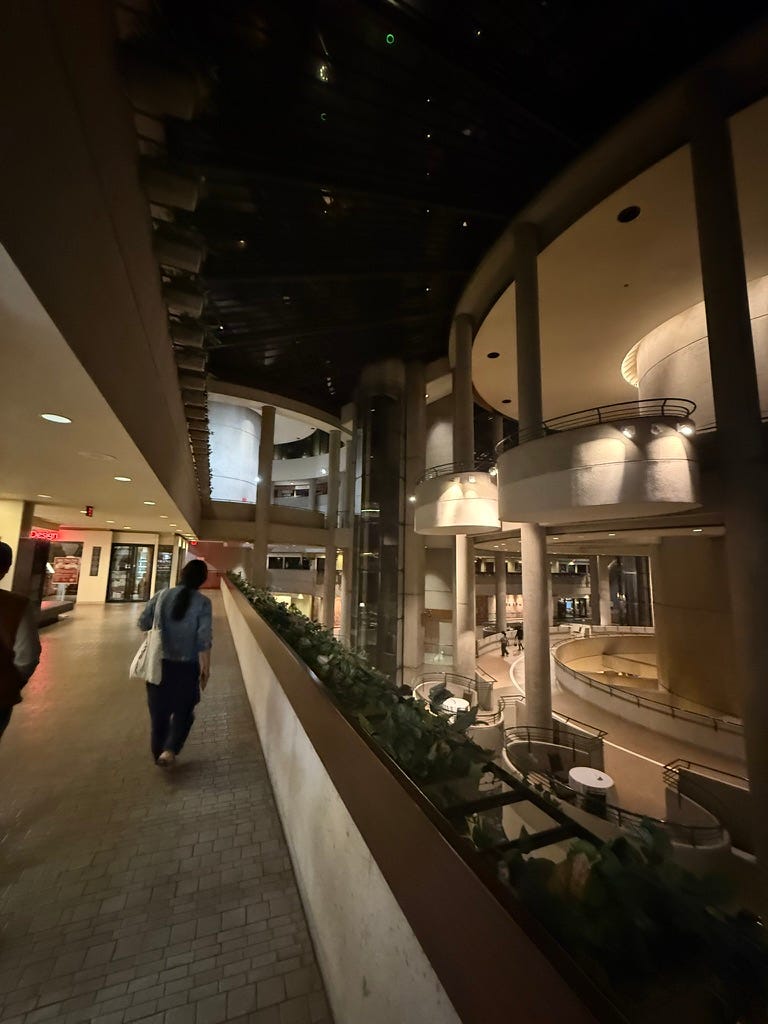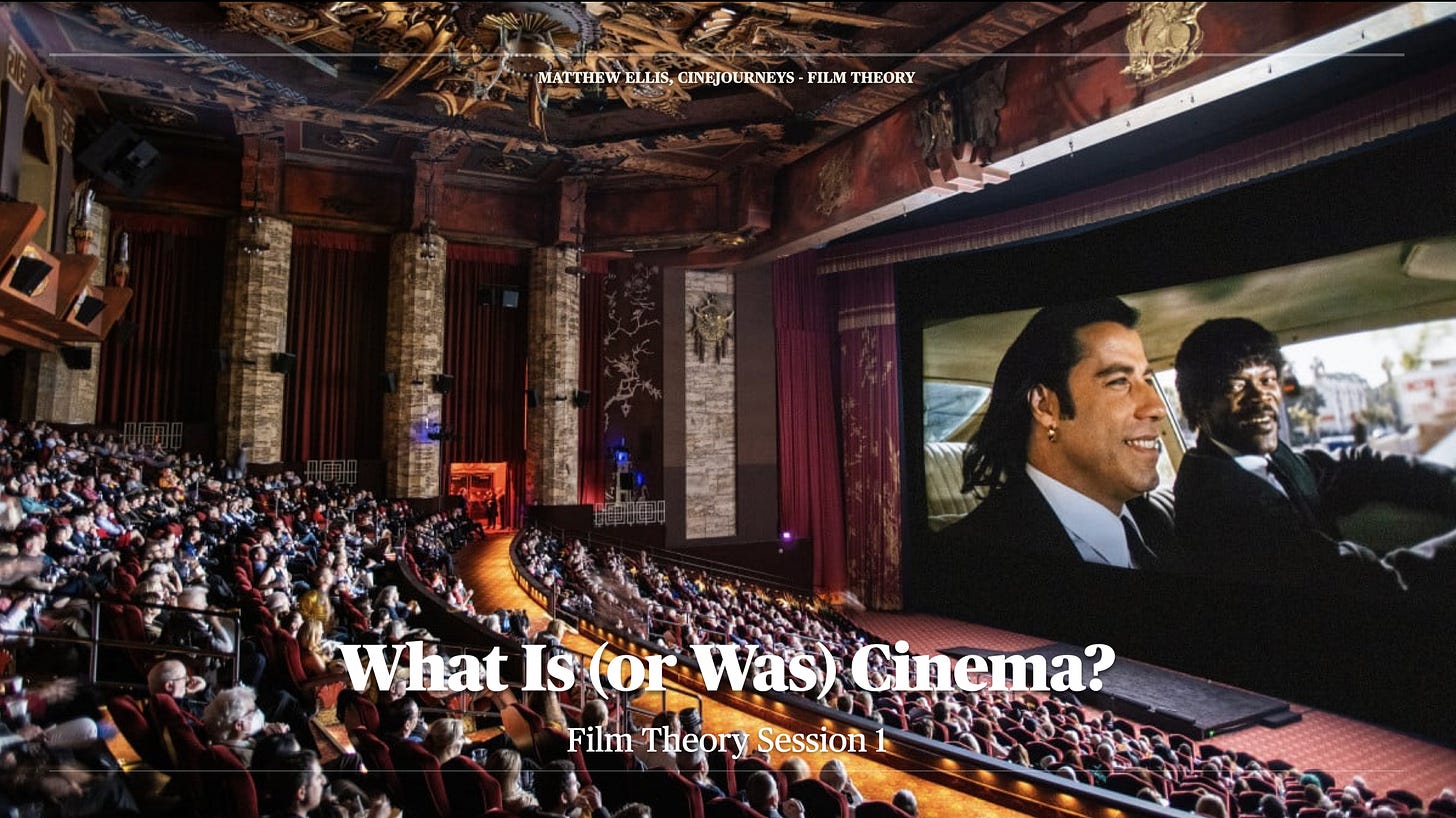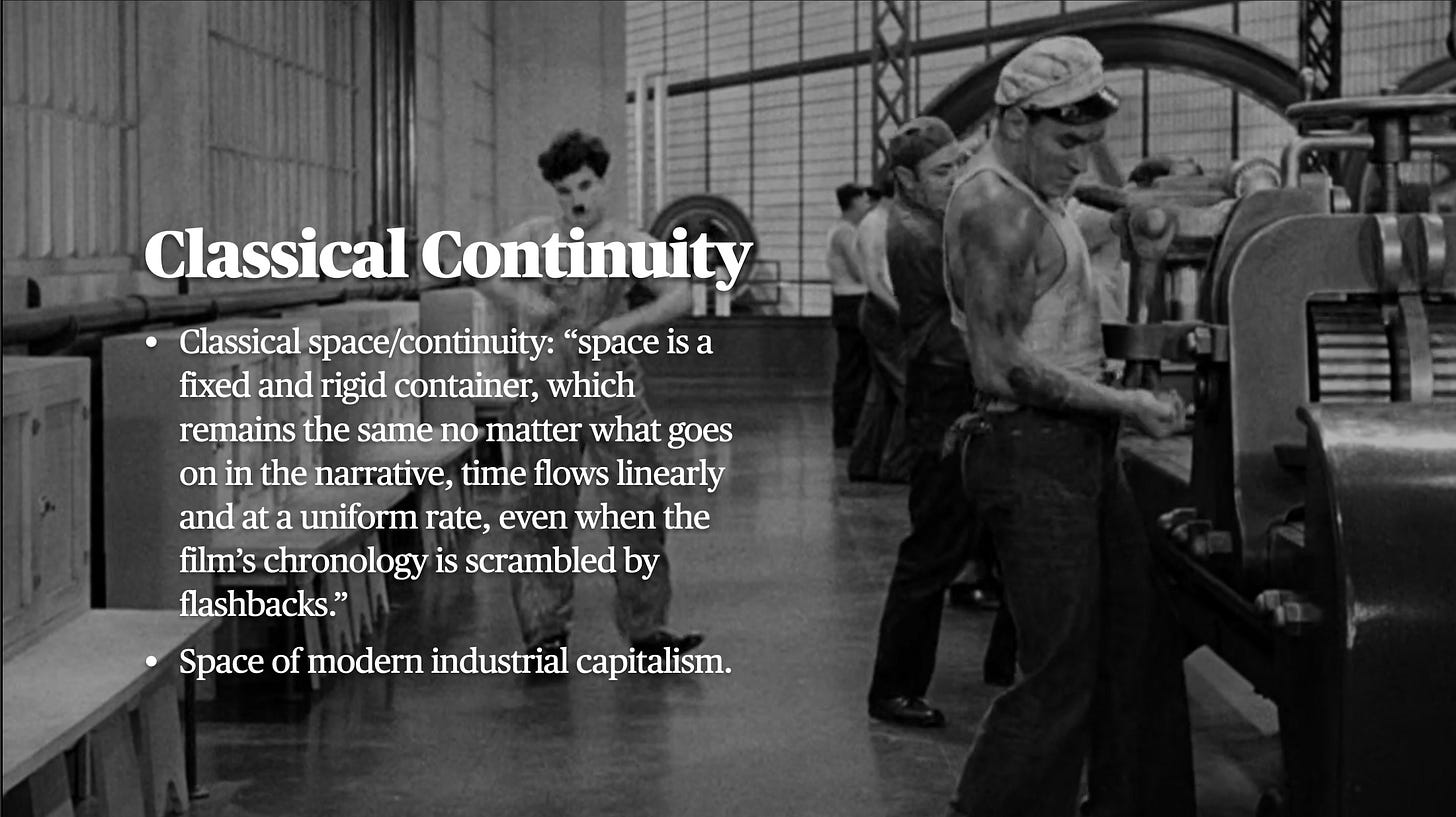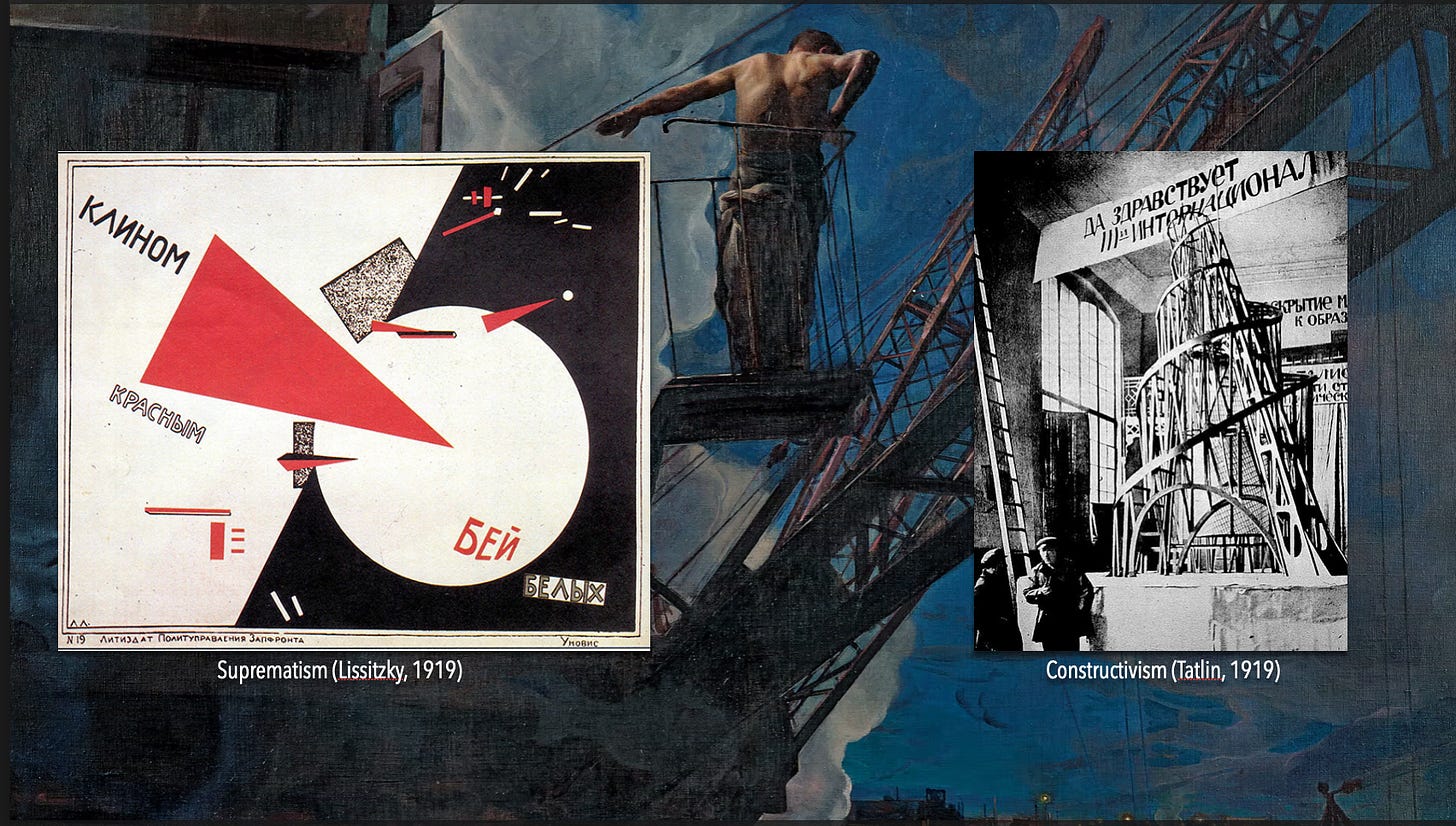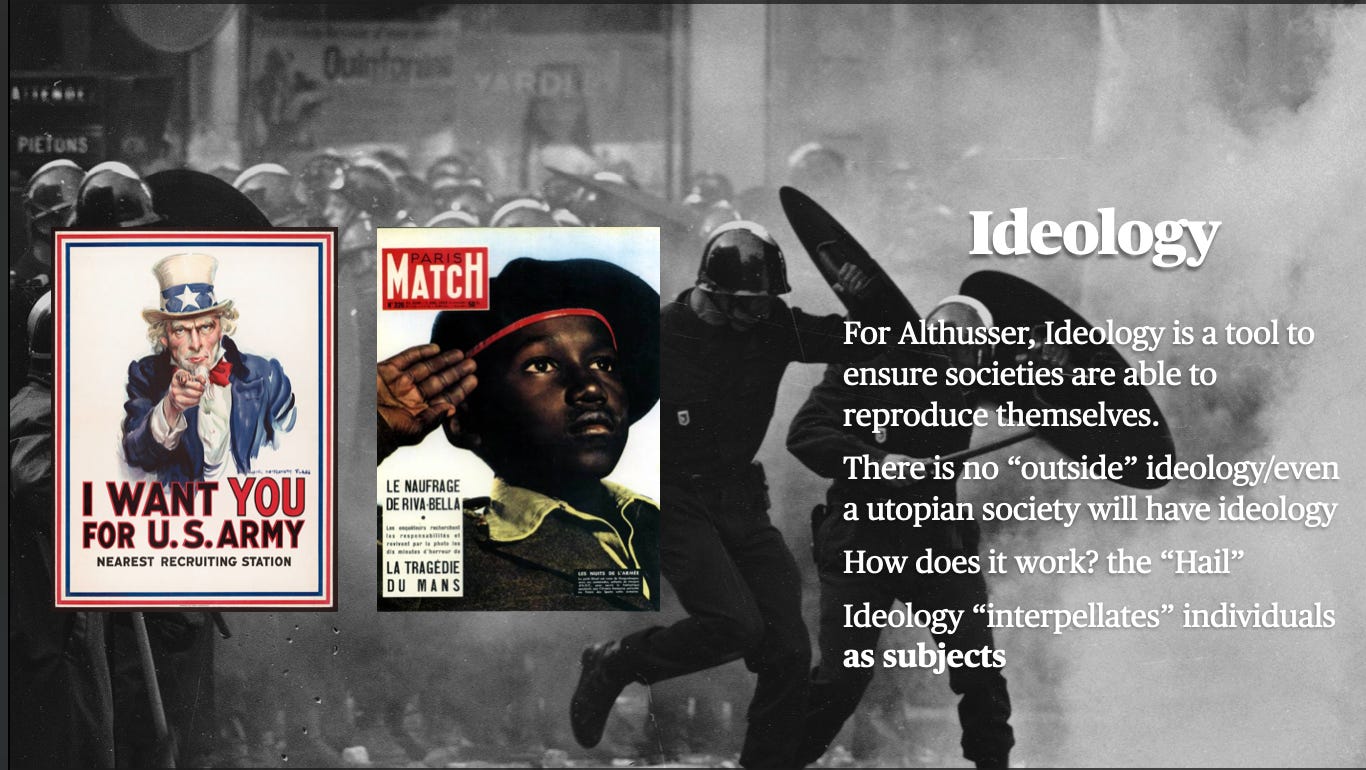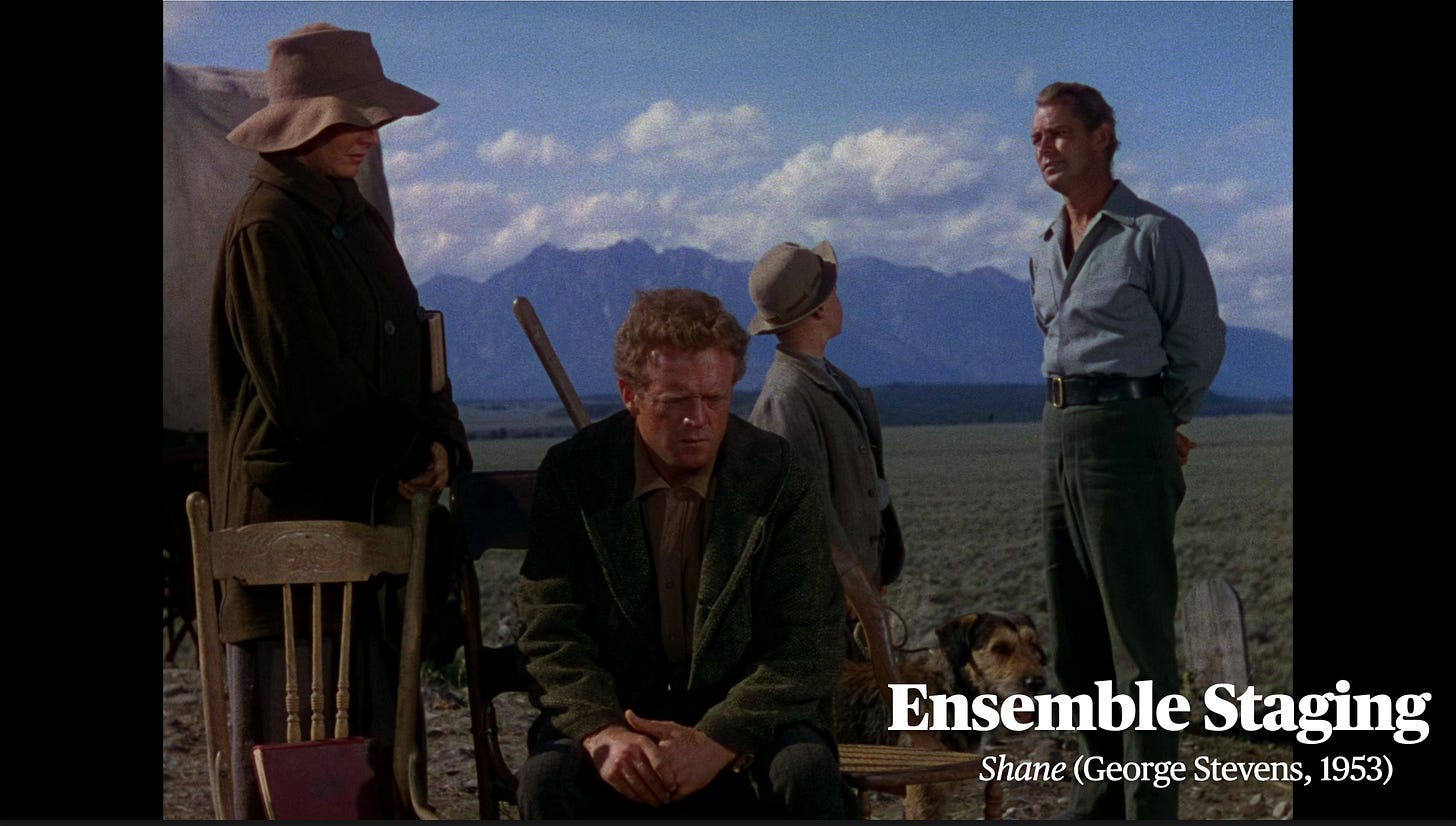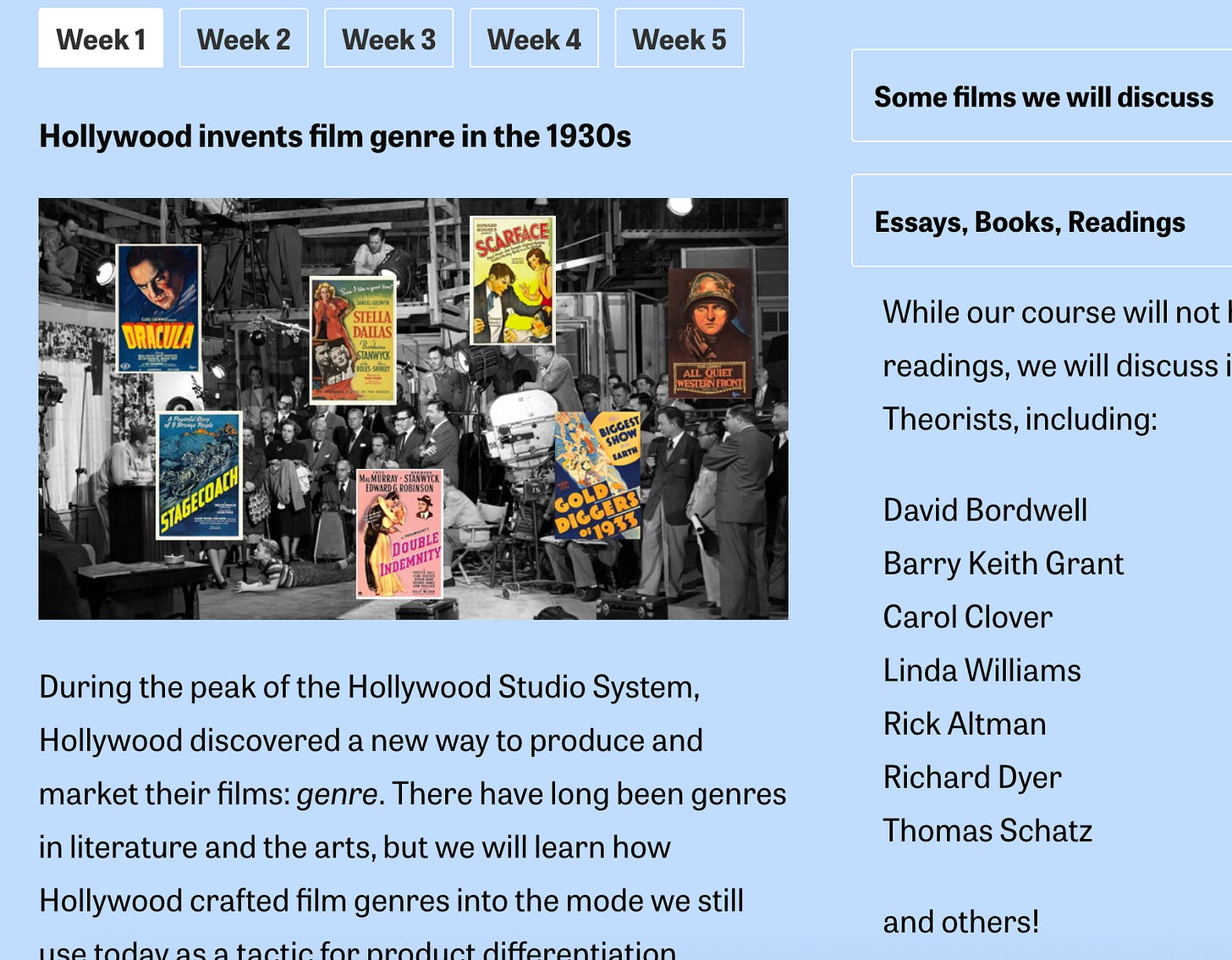7.25 - Some Updates, TAKE MY CLASS!
I spent last week down in Los Angeles for a conference, and finished my first Cinejourneys course at the same time. You should sign up for the second!
I just got back from Los Angeles where I attended the inaugural Hollywood Conference held at USC. I was invited to speak on a roundtable on “Industrial Death” put together by my friend Peter Labuza, a former grad school colleague who now does research for IATSE; he also invited Alena Smith, who created Dickinson for AppleTV+, and is now executive-producing an upcoming FX show called Cry Wolf (dude, I may not “have a job,” but how cool was that to type??!).
It was one of the best conferences I’ve ever attended, although I’ve only got a decade under my belt. If you have been reading me online for however long, you know what kinds of things I talked about, some of which I want to put into my book. So this gave me a chance to more formally “try out” some of these ideas, so to speak. And I think it went well! Even more enjoyable was the opportunity to reunite with some dear friends from grad school and elsewhere and get lost in the infamous Westin Bonaventure Hotel ourselves.
I shit you not this place is even weirder than Jameson made it out to be. I always thought he was overselling it for rhetorical flourish! Now that said, it’s not like we stumbled in after a late flight, desperate to find the check-in desk. Our entire visit was intentionally charged with the energy of the Bonaventure Hotel anecdote rattling around in our heads, which ultimately became a rolling set of jokes throughout the night, occasionally interspersed with insightful questions like how has the view of LA’s skyline from the rotating, rooftop restaurant changed in the years since it was built? and so on.
I teach that anecdote in class as much as possible. I think it’s the best way to crack Jameson’s whole project, and sometimes I think that the reason he can seem so mystifying is because readers encouter the diagrams from The Political Unconscious first and then freak out. But when I start with this story, my students excitedly figure it out right away. Every time! It’s such a cool teaching moment; I know that Postmodernism has dropped off syllabi over the past decade and I think that’s a bummer. As a result, some academics haven’t had the chance to experience this moment of clarity this generation of students have when encountering his ideas for the first time. I think it’s in part because the book got old and tired profs wanted to move onto other ideas after a few years, and maybe it was always a little a bit much, wasn’t it? But whenever I teach it—from fancy private institutions to giant public universities with a 91% acceptance rate—my students seem to have no trouble concretely understanding the metaphor all the way through to its many abstracted ends. That’s the best thing there is, that moment when you see that spontaneous Understanding just pop behind a set of eyes. At this point, I tend to think our jobs as academics should be to make this moment happen as much as possible. It should be redundancy for when they start tearing the campus buildings down, too.
So what is this anecdote that brought us together? Well, the story goes that Fredric Jameson supposedly got lost inside this very same Westin Bonaventure Hotel shortly after it was built while visiting LA for a conference one year, and then later used it as a metaphor for describing what it feels like to live under the conditions of late capitalism in general for the first chapter of his book on Postmodernism. What is postmodernism? It’s not a style of art, it’s a historically specific experience, it’s like when you can’t find the god-damned check in desk in a giant hotel. It’s such a cool bit of academic lore, its strength coming in large part from Jameson’s own literary flourish (a very modernist aesthetic tendency from the author who declared that period to be over!). But also everybody has been feeling a bit more generous to Jameson these days, which I of course think is good, so the truth is there were many reasons to be there that night. For instance, someone was taking what appeared to be promotional exercise photos on the exposed racing track at around 9:45 PM at night, yes, that’s right, I wrote the exposed racing track, inside the hotel, near the top floor. It just suddenly appeared and intersected our path as we were walking from one elevator to another, on our way to get to the restaurant. I think I want to put this anecdote somewhere…
But all in all, it was a nice way to cap off a productive week that saw me make progress on my book proposal as well as finish my first five-week Cinejourneys course on Film Theory. It was a cool experience and I want to thank everyone who joined up; I’ve taught online during Covid but this is a completely new form that I’m still trying to master to make it worth your money, time, and interest, but also to be an effective class that actually teaches you something.
Cinejourneys
After this first course I think I have a little better idea about how I want to run these things, and what the structure of each class will look like. Some of that will be easier with classes about specific film genres, periods, or ideas rather than a compressed introduction to the basics of film theory—which, I should acknowledge is just my version of the tradition. But I think we had a lot of fun. I got to make some cool slides!
I love showing paintings in class. By the way, I won’t lie to you—if you take one of my classes, chances are I will make you look at at least one painting. It took me a while to understand my own sense of what I think cinema actually is, and I think these screengrabs should give you a sign as to what that sense might be. This is the kind of stuff I like to talk about. You think we are going to just talk about story? Nah dog, we are gonna be looking at paintings from the 11th century and a few tweets, and then you’re going to see a clip from a documentary about the postwar French film scene. You’ll like it, trust me! Come take a class!
Ok two last slides, I was particularly proud of showing these outside of the university for a film class:
We show clips in class and I like to do formal analysis. But I don’t want you to feel like it’s needlessly complicated. I’ve always felt that my best strength as a working academic is that I know how to translate complicated theoretical abstractions into more useful vernacular forms. My advisor used to chew me out for this in my scholarly writing, and instead of realizing what he was actually telling me to do, I spent the better part of a decade trying to make my writing sound all Proper and Intelligent, and then I forgot how to write. I quit writing and just read a shit ton, and started teaching teaching teaching, and now I seem to have remembered how to write down those ideas because it turns out I’ve been thinking them out loud in front of a classroom full of students for years. Now, it turns out that’s actually how academia is supposed to work, but you wouldn’t think so, not with the way it is currently set up!
In any case, I want my Cinejourneys classes to be a chance for you to come think with me, and to learn about cinematic art, culture, and history in the process. I want to make you a better viewer, and I want to show you some cool stuff. But I also want to show you how to look at things, including movies you might not think are interesting to look at because you didn’t realize they are asking to be seen another way. As I’ve been piecing together the theoretical and historical structure of this book for the past few years, I’ve really missed the chance to just get my hands dirty talking about movies. My next set of classes for Cinejourneys are going to be more in that direction.
For now, I can tell you about my next course, Genre Theory, which you can register for while you are reading this. The class runs over Zoom for five consecutive Mondays, starting August 11th, at 8PM.
I would love to have you in the course—this one is a new offering for me and I’m excited to try out a new theory of cinematic genre I have been developing for the past two years. Register at the link above, and I will leave you with a description of the course I put together a few weeks back. Toodles!




